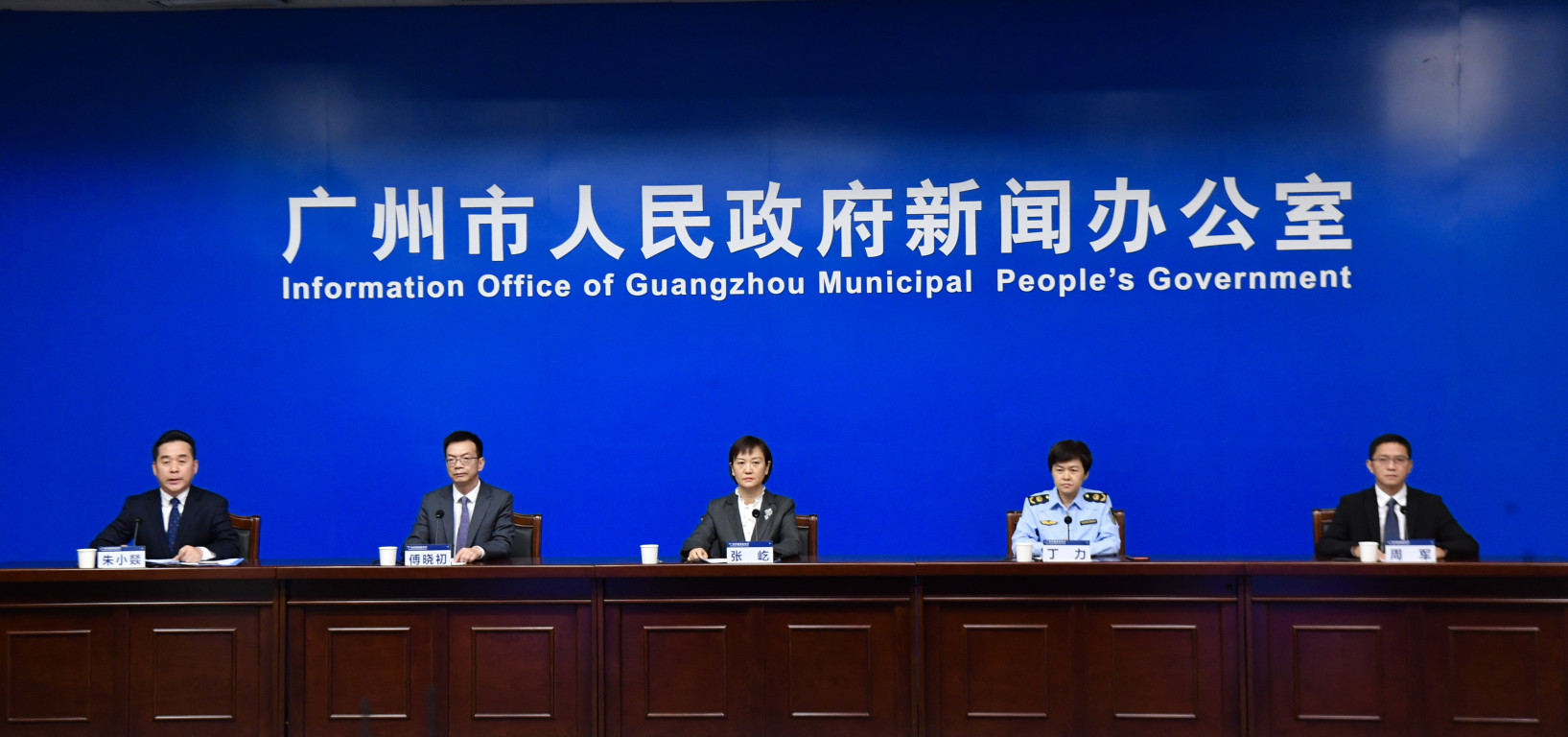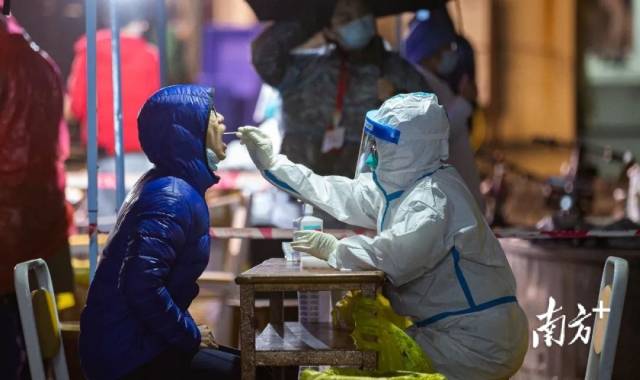On November 1, Guangdong reported 106 new locally transmitted confirmed COVID-19 cases (73 in Guangzhou, 18 in Shenzhen, 5 in Shantou, 4 in Meizhou, 4 in Jiangmen, 1 in Yangjiang and 1 in Qingyuan), and 298 local asymptomatic infections (253 in Guangzhou, 5 in Shenzhen, 2 in Zhuhai, 2 in Shantou, 4 in Foshan, 26 in Meizhou, 3 in Dongguan, 1 in Jiangmen, and 1 in Jieyang).
Guangzhou detects 73+253 new local cases

(Photo provided to Newsgd.com)
“On November 1, Guangzhou reported 326 new local infections, among which 4 cases were detected at the community level while the others were detected during quarantine and screening in controlled areas.” Zhang Yi, deputy director of the Guangzhou Municipal Health Commission, said at the press conference.
Most of the new infections in Haizhu District on November 1 were in the Kangle and Lujiang Villages, Fengyang Subdistrict (凤阳街康鹭片区). The site is about 1 square kilometer, with a permanent population of more than 100,000 and more than 5,200 garment factories and warehousing enterprises. Most enterprises are labor-intensive, making it difficult to prevent and control the epidemic.
Songzhou Subdistrict (松洲街道) of Baiyun District, with high risk in the early stage, has stabilized its epidemic situation. However, new cases are found in Tongde Subdistrict, Junhe Subdistrict, Jiahe Subdistrict, and Renhe Town (同德街、均禾街、嘉禾街、人和镇), involving densely populated places. Yuncheng, Xinshi, Longgui, and Helong Subdistricts (云城、新市、龙归和鹤龙街道) detected cases, and the risk of social transmission still exists.
Liwan District restricted the control areas in Hualin, Caihong, and Jinhua Subdistricts (华林、彩虹、金花街道), and other subdistricts and investigated epidemic-related places. Tianhe District has reduced the epidemic transmission risk. Yuexiu, Zengcheng, Huangpu, Huadu, Conghua, and other districts have controlled the spread.
At present, the epidemic situation in Guangzhou is still complicated. Residents who plan to leave Guangzhou must have a negative nucleic acid test certificate within 48 hours.
Tracking of the new cases reported on November 1 involves:
Haizhu District: Nanzhou Subdistrict (南洲街道)
Yuexiu District: Datang Subdistrict and Jianshe Subdistrict (大塘街道、建设街道)
Liwan District: Nanyuan Subdistrict and Dongsha Subdistrict (南源街道、东沙街道)

(Photo: Nanfang Plus)
Shenzhen adds 18+5 local cases
On November 1, Shenzhen reported 18 new confirmed cases and 5 asymptomatic infections. Among the new cases, 19 were detected during centralized quarantine, 1 in domestic quarantine under medical observation, 1 in the screening of key people under non-closed loop management, and 2 in community screening.
Tracking of the new cases involves:
Futian District: Huaqiang North Subdistrict and Futian Subdistrict (华强北街道、福田街道)
Baoan District: Songgang Subdistrict (松岗街道)
Meizhou detects 30 infections
On November 1, Meizhou's Fengshun reported 30 new positive cases (4 mild-type cases and 26 asymptomatic infections), among which 4 were detected during screening in high-risk areas, 20 during domestic quarantine, and 6 during centralized quarantine.
Author | Clarice
Editors | Wing, Nan, Monica, Jerry
















